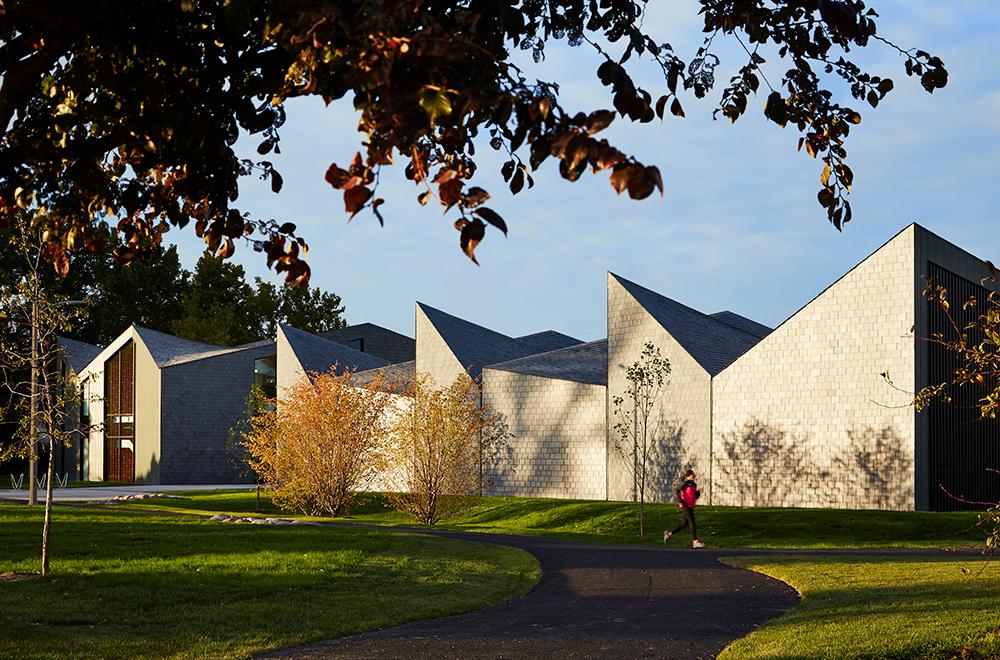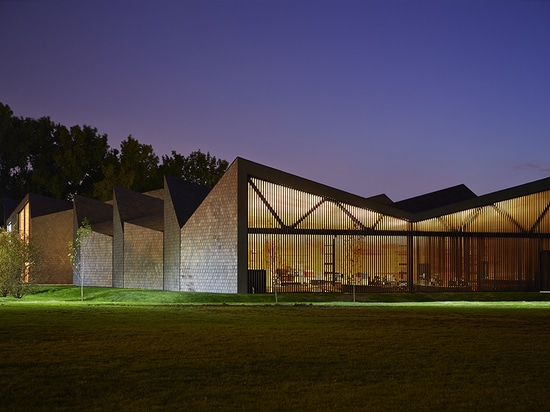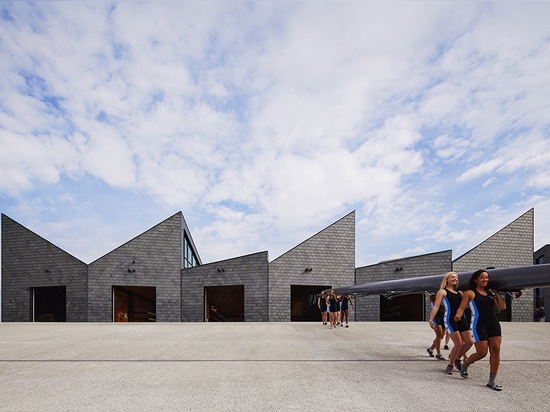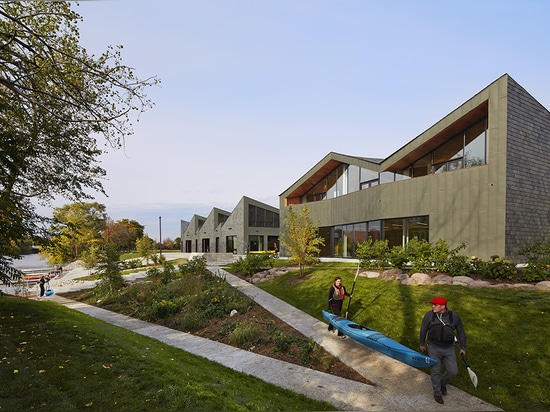
#PUBLIC ARCHITECTURE PROJECTS
WMS Boathouse at Clark Park
Much of the work of MacArthur Fellow Jeanne Gang has focused on water, in particular the river and lake of her hometown of Chicago. Her 2011 book Reverse Effect explores the natural, social and recreational future of the Chicago River. An outcome of this research is her firm's design of two boathouses along the river, the first one completed in Clark Park on the city's northwest side. Studio Gang Architects answered a few questions about the project
What were the circumstances of receiving the commission for this project?
The facility is one of four boathouses proposed by Chicago Mayor Rahm Emanuel as cornerstones of his riverfront revitalization initiative, spurred by the provision of nearly $1 million in grant funds by the United States Environmental Protection Agency to help clean up the river and drive job creation.The sites were chosen to line up with improvements the Chicago Department of Transportation is making to extend trails along the river, providing easier and more consistent river access for runners, bikers, and walkers. The boathouses will each contain a concession facility and will serve both as access points and attractions along the river.
Please provide an overview of the project.
As the City of Chicago works to transform the long-polluted and neglected Chicago River into its next recreational frontier, the WMS Boathouse at Clark Park helps catalyze necessary momentum. The boathouse’s architecture is intended to visually capture the poetic rhythm and motion of rowing. By creating a new public access point along the riverfront, it also reveals the larger movement toward an ecological and recreational revival of the river. In this way, the motion captured in the structure speaks not only to rowers’ progress but also to advancing important issues of public interest and environmental justice.The 22,620-square-foot complex consists of a two-story mechanically heated and cooled training center; one-story boat storage facility; and a 140-foot-long floating launch dock, custom-engineered with a forty-foot-wide gangway. The main building houses indoor rowing tanks, ergometer machines, communal space, and an office for the Chicago Park District, and features a spacious deck overlooking the river. Boat storage includes space for kayak and canoe vendors, an office, and clear span storage for rowing shells and support equipment.
The exterior is clad in zinc panels and Heathermoor slate, an exceptionally strong and durable material with a low absorption rate, resistance to freeze-thaw cycles, and no detrimental effects on the environment. Heathermoor slate is also used to shingle the dynamic, modulating roof. On the interior, the elegantly sloping wood ceilings and custom millwork are comprised of Douglas Fir plywood. Highly durable and highly sustainable black locust wood was used for the flooring throughout. Artistic flourishes, such as gold-painted biscuit patches and a life-vest-inspired stenciled wall treatment, accent the space.
What are the main ideas and inspirations influencing the design of the building?
The design translates the time-lapse motion of rowing into an architectural roof form, providing visual interest while also offering spatial and environmental advantages that allow it to adapt to Chicago’s distinctive seasonal changes. With structural truss shapes alternating between an inverted “V” and an “M,” the roof achieves a rhythmic modulation that lets in southern light through the building’s upper clerestory. The clerestory glazing warms the floor slab of the structure in winter and ventilates in summer to minimize energy use throughout the year. Visually striking from any viewpoint, the boathouse structures are dually oriented—toward the river and toward each other. An intimate courtyard leads to an expansive terrace (and the floating launch dock beyond), delineated with pervious concrete and asphalt and native plant species to reduce runoff and allow for groundwater recharge.
To what extent did the clients and/or future users of the building influence the design and the outcome of the building?
Currently home to the Chicago Rowing Foundation (CRF), the boathouse supports the vitality of Chicago’s urban communities by providing a fun and stimulating space where people from all over the city, especially youth, can participate in sport and develop vital life skills. The building accommodates a wide range of indoor and outdoor activities year-round, including learn-to-row sessions both in tanks and on the river, team rowing, ergometer training, rowing-inspired yoga classes, and lessons tailored to individuals with disabilities. In partnership with the Chicago Park District, the CRF will host youth campers each summer, organize community events, and facilitate programming for students from twenty-nine high schools and thirty-six middle schools.
How does the building relate to contemporary architectural trends, be it sustainability, technology, etc.?
The completion of the WMS Boathouse at Clark Park exemplifies the City's commitment to renewing its waterfront but also to investing in its youth,” said Jeanne Gang of Studio Gang Architects. “The building provides a stimulating and fun space where young people from all over the city can participate in sport and develop important life skills. In this way, the building’s design, inspired by the rhythmic motion of rowing, parallels the forward momentum of efforts to revitalize the river while supporting the vitality of urban communities.”




